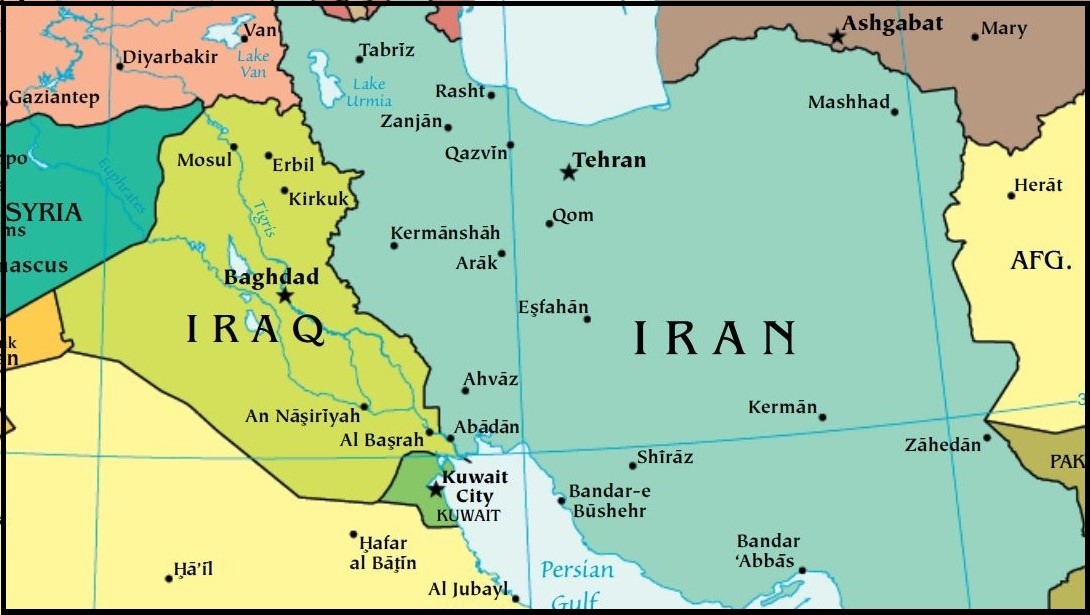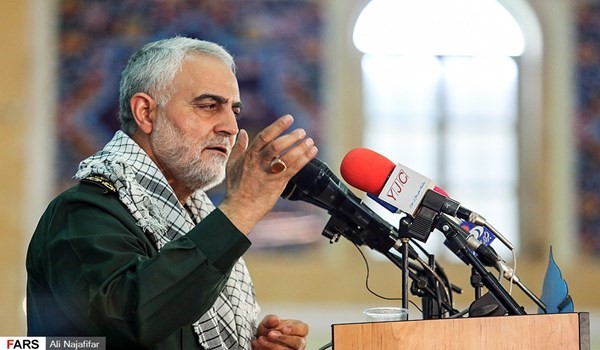On November 18, 2019, The Intercept and The New York Times published 700 pages of classified Iranian intelligence cables that illustrated the depth of Tehran’s penetration of Iraqi politics, intelligence and the military. The cables, written between 2013 and 2015, also detailed meticulous efforts by Iranian intelligence to cultivate spies among Iraqi officials and informants working for the United States as well as a U.S. official in Iraq.

The cables, which reportedly originated within Iran’s Ministry of Intelligence and Security, were supplied anonymously to The Intercept, which shared them with The Times. The Intercept’s source purportedly leaked the documents to “let the world know what Iran is doing in my country Iraq.”
The cables exposed the inner workings of Iranian intelligence, but also revealed the fierce rivalry within Iran between its intelligence ministry and the Revolutionary Guards (IRGC).
Spy versus spy
The cables outlined how Iran tried to compromise U.S. intelligence and its covert operations in Iraq. Iran cultivated sources among Iraqi government and military officials to secure information on American diplomatic, military, and economic initiatives.
- Iran reached out to former CIA informants in Iraq after the withdrawal of U.S. troops in 2011. One informant told the Iranians “the locations of CIA safe houses; the names of hotels where CIA operatives met with agents; details of his weapons and surveillance training; the names of other Iraqis working as spies for the Americans.”
- Iran identified a State Department official as a potential spy. The official could have provided Iran “intelligence insights into the U.S. governments plans in Iraq,” including covert operations, in exchange for financial compensation, the cables said. They did not make clear whether Iran’s recruitment scheme succeeded.
- The cables revealed that the top political advisor for former Iraqi speaker Salim al Jabouri was an Iranian agent. The advisor provided insight to Iran on Jabouri’s behavior and urged the Iranian Embassy in Baghdad to “keep him from the likelihood of slipping into a pro-American position.” The informant also told Iranian officials about U.S. interest in the Akkas natural gas field near the Iraqi-Syrian border
- Gen Hatem al Maksusi, the former commander of Iraqi military intelligence, ordered a subordinate to provide Iran with intelligence, including information on targeting software and mobile phone surveillance technology provided to Iraq by the United States.
Playing the influence game
The cables document Iran’s access to decision makers at the highest levels of the Iraqi government. The Iranian Embassy in Baghdad maintained a list of Iraqi politicians with ties to Tehran. Senior Iranian intelligence and Quds Force officials met with Iraqi cabinet officials to convey specific requests from Tehran or to strengthen relationships.

- In 2014, the Iranian Embassy kept a list of Iraqi cabinet members who were loyal, close or “in complete harmony” with Iran. Iran believed it had a “special relationship” with then oil minister Adel Abdel Mahdi and then foreign minister Ibrahim al Jafari. Adel Abdel Mahdi became the prime minister in October 2018.
- Iranian officials believed Iraq’s ministers of municipalities, communications, and human rights were “at one with us.” All three were members of the Badr Organization, the Iranian-backed political party and paramilitary organization.
- One cable reported that General Qassem Soleimani, commander of Iran’s Quds Force, met with Bayan Jabr, the Iraqi transportation minister, in 2014 to request permission for Iranian aircraft to fly over Iraq to neighboring Syria. The request was granted. In a subsequent interview with The Intercept and The Times, Jabr claimed that the overflights were for pilgrims and humanitarian supplies, not to ferry arms to Syria.
- In December 2014, Nechervan Barzani, the former prime minister of the Kurdistan Regional Government, provided Iran with details of his meetings with U.S., British, and Iraqi officials.
- In cables in 2014, Iranian officials expressed frustration with Shiite cleric Moqtada al-Sadr for refusing to cooperate with pro-Iranian politicians in Iraq.
- In January 2015, an Iranian intelligence official held a meeting with former Prime Minister Haider al Abadi, even though Tehran believed he was pro-American.
Iran at war
Iran’s intelligence ministry participated in the campaign against ISIS by supplying weapons, training, and intelligence to Kurdish fighters in the early days of the campaign. But the cables showed that its officials were upset when Iran was excluded from international deliberations and planning by the U.S.-led military coalition against ISIS.
- Iran’s intelligence ministry had a source knowledgeable about internal deliberations at a meeting of senior ISIS leaders in Mosul. The source cited a meeting of the caliphate’s “Central Council” presided over by Abu Bakr al Baghdadi, the ISIS leader, in December 2014.
- Iranian intelligence cultivated ties with the Kurdistan Socialist Democratic Party, a Kurdish political party with a paramilitary wing in Iraq. Iran provided “special military and security training” to the Kurdish fighters.
- In the fall of 2014, Iran sought to capitalize on divisions among Sunni fighters frustrated with the ISIS leadership in northern Iraq. Its intelligence officers communicated with insurgents to turn them against the jihadi group.
Internal rivalries
The cables revealed tensions between the military Qods Force and Iran’s civilian Intelligence ministry. The two services vied for influence within Iran’s national security apparatus, but the cables reveal a deeper enmity between the rival services than was previously known.

- A November 2014 cable blamed Soleimani for “inflamed sectarianism between Shias and Sunnis.” As a result, the intelligence ministry considered “limiting” the influence of Qods Force commander Soleimani to preserve Iran’s strategic position and goodwill in Iraq.
- Another cable by Iranian intelligence criticized Soleimani for “publishing pictures of himself on different social media websites” during the anti-ISIS campaign. The cable was meant to be kept secret from the Qods Force.
- In April 2014, an Iranian intelligence ministry operative attended a meeting in Turkey between the Qods Force and representatives of the Muslim Brotherhood without the knowledge of the Iranian military. The meeting was an attempt to explore cooperation between the two in Egypt after the ouster of President Mohammed Morsi in 2013. They reportedly discussed decreasing sectarian tensions in Iraq and potential cooperation in Yemen. They failed to reach agreement.
- The cables detailed atrocities committed in Iraq by IRGC-backed militias amassed under the Popular Mobilization Forces (PMF). One cable cited the massacre of Sunnis in Jurf al-Sakhar, a town the the route Iranian pilgrims take to the Iraqi holy city of Karbala. The town was overrun by the Islamic State in mid-2014 and retaken by Iraqi security forces in October. The cable said the massacre had soured the “sweetness” of Iraq’s victory against ISIS and blamed the PMF for squandering Iran’s gains in Iraq.
Andrew Hanna, a research assistant at the U.S. Institute of Peace, assembled this report.
